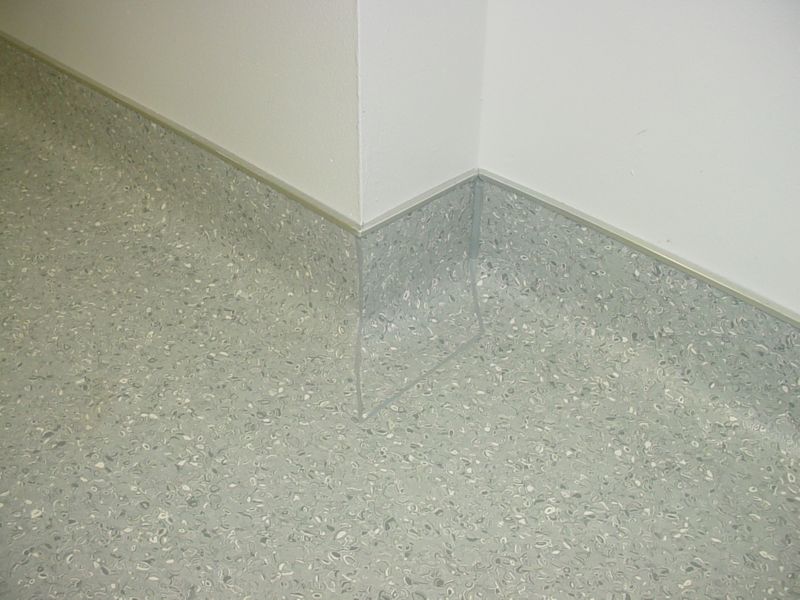When it comes to medical environments which include private practice, diagnostic centers and hospitals, there aren’t a lot of flooring options to accommodate high foot traffic, the daily load of rolling heavy equipment and infection control. The flooring system has to be hard wearing and practical and you need a heavy duty flooring with a very high psi so the flooring will stand up over time. You can’t leave the flooring selection to luck.
So what is the best flooring choice for these applications? Here’s some advice from the experts who talked about it in a LinkedIn Discussion Group.
Sheet Vinyl has the fewest seams and integral coving of the base and is the best for infection control. However, if you move heavy object, like a bariatric bed, moveable OR table it will leave temporary indentations that will rebound after a short time. If the traffic pattern with the heavy equipment is consistent you’ll get permanent wear, especially if the floor prep is shoddy. You may see degradation of the underlayment where carts go thru doorways and halls. Some considerations for sheet vinyl: Be careful with the prep especially if you plan on a wood grain and then a top coating of wax. The wax amplifies the trowel and subsurface discontinuities in the floor prep.
Most VCT and many sheet vinyls are dense enough to resist showing track marks of rubber casters of heavy equipment, if they are applied over a non-compressible substrate. For extra precaution or in operating suites, use seamless with welded seams and integral base. In hospital environments the codes often dictate seamless with welded seams in some areas for infection control. Seamless and integral base allow thorough cleaning. VCT tile is not recommended product where infection control is an issue since VCT shrinks over time and then the joints are even bigger.
Antimicrobial Resin epoxy flooring is durable and seamless, has recycled material content, low VOC and a good life cycle cost than sheet goods & VCT. The science is based on an amino compound constantly emitting ions of silver that kill any bacteria which has settled on the surface of the floor. As for the substrate, if it is in poor condition then a self levelling coat would be applied to the floor before the antimicrobial top coat would be applied.
In lieu of paying a high dollar for epoxy resin or a welded seam floor, however, clients often pick VCT and Carpet. A powerbond product is a thin, fairly dense cushion applied to the back of a piece of carpet, but it will still be difficult to push heavy carts and portable xray equipment over it and it may lead to employee injuries. Some manufactures like the Tandus carpets with the powerbond back work well in high traffic areas and usually make nice unnoticeable seams.
Where VCT is used, the flooring contractors should use Ardex K15 or Ardex feather finish to level the floor and remove any concrete imperfections. Floor prep of this quality is not cheap although the end product is well worth it. Proper handling of the VCT is also most critical. It should be delivered several days in advance, stacked properly and in a controlled environment. These items listed above will result in very tight seams in the VCT, but VCT and sheet vinyl can dent, crease and maybe tear.
Biobased tile (BBT) is a good and greener alternative to VCT. But you still end up with lots of maintenance (and labor) on a floor that will continue for its lifetime. Make sure these areas are accessible for regular stripping and waxing, and not a 24/7 high use area that can only be shut down every couple of years for a day to re-do the floors.
Manufacturers require a minimum of 72 hours curre time on adhesives before any load can be placed on them. It can dimple or leave permanent depressions depending on wheel load. It does not repair easily. And when it does dimple, expect a finger pointing battle as to who is responsible, and the manufacturer will not admit responsibility. Other options include rubber flooring and sealed concrete.
You should ask all the questions about all the type of carts and equipment being used in your medical facility. Get detailed info from equipment manufacturers regarding the psi load their cart will exert on the flooring and then you need to select a flooring and underlayment product that will stand up to those loads.
Discover more from Helping NYC & Long Island Commercial Tenants, Owners, and Developers
Subscribe to get the latest posts sent to your email.





